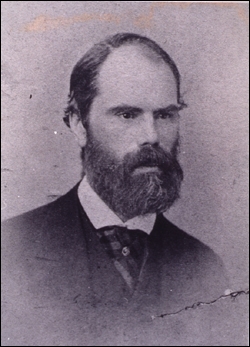To search the RPR site click here
The cataloguing system employed by Augustus Wollaston Franks, assistant and later Keeper of British and mediaeval antiquities at the British Museum from 1851 is described here:
'... Franks initiated a system whereby each [artefact] was numbered and entered onto a slip of paper 23 cm wide, 10 cm deep and divided into three columns. The left-hand column gave details of how, from whom and, if relevant, at what price an object had been obtained, the middle section contained a description with a drawing and reference to relevant publications and the right-hand side gave its number. The method was Frank's own, and he even paid an illustrator from his own pocket to add the drawings. The slips from each [archaeological] site were bound together to form a catalogue and are still in use as a source of primary data on the collections.' [Jill Cook, 'A Curator's Curator: Franks and the Stone Age collections' in Marjorie Caygill and John Cherry (eds) 'A.W. Franks ...' 1997 page 121]
and
'In his first ten years at the British Museum Franks accessioned a number of highly significant collections. These were never fully catalogued, even by nineteenth-century standards. Whereas Sloane, in the first half of the eighteenth century, numbered, listed and recorded his private acquisitions and kept proper letterbooks, this practice was not followed by the Museum in the 1850s. Donations were entered in a 'Book of Presents' usually, but not always, with lists. A registration system using the year, month, day and item number was started in 1837 by J.E. Gray (1800-1875), Keeper of Zoology, for natural history specimens. This was employed by other departments. In 1861 it was used in the first ethnography register ... From then on drawings were generally made against the descriptions. Shortly after this, with the death of Henry Christy in 1865 and Franks's appointment as Trustee of that collection, a system of registration or cataloguing slips was instituted for ethnography. Each object was provided with a separate slip, housed vertically in flat boxes called solander boxes. By about 1870 catalogue slips with drawings and descriptions of the Christy Collection accessions were fully established.
Until 1903, when a separate series of purely ethnographic registers of accessions was instituted, some accessions into the British Museum collections were not always properly recorded, whilst those into the Christy Collection were usually provided with an entry in a ledger book and a catalogue slip. Unfortunately, Franks also accessioned other major collections in separate individual series, which were related neither to the main Christy Collection nor to the main British Museum series. ...' [J.C.H. King, 'Franks and Ethnography' in Caygill and Cherry, 1997: 144]
AP, 2010.




